The Apple iPad Pro Review
by Ryan Smith, Joshua Ho & Brandon Chester on January 22, 2016 8:10 AM ESTSmart Keyboard
The other half of what makes the iPad Pro worth talking about is the Smart Keyboard. For those that are unfamiliar with how this keyboard works, in essence it’s really a flip cover that happens to hide a keyboard inside of it. This is yet another thing I mentioned that the iPad really needed to improve its potential as a productivity tool.
I’m going to go ahead and spoil this section by saying that while the Smart Keyboard is worthwhile if you’re typing out more than a paragraph, this feels like one of the clunkier aspects of the iPad Pro.
However, the important question is how I got to that conclusion. Going over the user experience of the keyboard is a pretty simple matter. Attaching the cover to the tablet works the same way it always does, which is accomplished by placing the edge of the cover onto the edge of the tablet which also contains the Smart Connector. There are some strong magnets that help with alignment here, and provide the positive pressure needed to ensure that the data and power pins of the Smart Connector are firmly connected to the keyboard.
Once the cover is connected, setting up the keyboard is done by folding it out and doing some origami until the tablet is docked into the right place on the keyboard, which has a noticeable notch to it. Aligning this despite the strong magnets does take some work, as it seems that unless the cover is setup correctly the keyboard isn’t enabled at all.
If you’re trying for precision, I would say that there’s roughly a 4-5 second time delay from the moment that you decide that you need to use the keyboard to actually using it. In addition to this time delay, the keyboard is rather precarious and is basically only stable when you’re using it on a table. While gravity can keep the whole setup somewhat stable on your lap when the display is leaning backwards, if the display starts leaning forwards there’s really nothing stopping it from collapsing and detaching from the cover, as while the magnets are strong enough to hold the tablet in a static state, they aren’t strong enough to hold the tablet if there’s the additional force of decelerating the tablet as it falls. As a result, the angles that the keyboard and tablet can hold relative to each other is fixed.
To be fair, once the keyboard is set up and it’s in a stable position, typing on the tablet is a great experience. The Surface Pro 3 was decent in my experience, but the touchpad with its lack of strong palm rejection made for some frustrating experiences. In this respect, the iPad Pro does a lot better, to the extent that I didn’t have any trouble doing things like typing up long forum posts or various sections of this review. Key travel is short, but there’s good haptic feedback and the layout of the keyboard doesn’t have any strange issues that seem to happen so often to so many tablet keyboards. Something like the Pixel C just doesn’t even compare here, especially because due to the use of Bluetooth it’s absolutely useless in an apartment or any remotely dense environment where the 2.4 GHz spectrum is crowded to the point that it approaches being unusable.
However, despite this significant setup time for the keyboard cover, pretty much the only value for the keyboard cover is text input. Due to the ergonomics of a near-vertical touch screen it’s really not something that can be used for extended periods of time as once you’re done with text input to comfortably use the touch screen you really need to break down the keyboard and revert it back to a simple tablet.
I’ve spent a lot of time thinking about the conundrum of the keyboard when it comes to these tablets, and honestly I don’t think anyone has figured out the right way of doing things yet. I think the Pixel C in form is a step in the right direction, but the execution is unfortunate to say the least. The iPad Pro touchscreen keyboard has the size to allow for touch typing, but the utter lack of position feedback makes it difficult to know where to keep your hands and because touching the display means inputting a character it’s necessary to awkwardly keep your hands right above the glass of the display. The heart of the issue here is that it’s necessary to have an input method where it’s easy to keep your fingers resting on the home row of the keyboard, with clear haptic feedback for input and some indication of where the keys are. It’s also necessary to make sure that this keyboard is easily accessible when it’s needed but quickly stowed away when it isn’t.
I can’t help but wonder whether the better solution here would be something like Lenovo’s Yoga Pro design, but with a different method of execution. Instead of making the two halves a single unit, the keyboard portion should be easily and quickly detached with the smart connector held within the hinge. Rather than a traditional laptop keyboard, something more like the current Smart Keyboard would make a lot of sense. However, I suspect that in doing this a traditional flip cover would no longer make sense as the keyboard would really become an integral part of the user experience once properly integrated. We can talk about how touch-only is a faster and more convenient experience, but this really only applies to navigation as while I can type at about 40 words per minute without issue on a phone or tablet trying to reach 100 words per minute is hard to say the least.
Overall, I should make it clear that the iPad Pro’s Smart Keyboard is not a bad keyboard by any means. When I’m able to just focus on typing, the user experience far exceeds pretty much anything else I’ve tried in the industry. The problem is that as the Smart Keyboard starts to approach the point where I can actually use it, I start to really notice all of the flaws that the implementation has. In this case, the two major issues that really need to be solved here are speed to deploy/stow and lap stability. While a lot has been made of the iPad Pro’s inability to have adjustable viewing angles realistically it only needs two viewing angles, similar to how the Smart Cover only has two viewing angles. If the Smart Keyboard can feel like it appears and disappears almost instantly and can be used without a table effectively, it would probably be the ideal solution to the keyboard problem that tablets face.


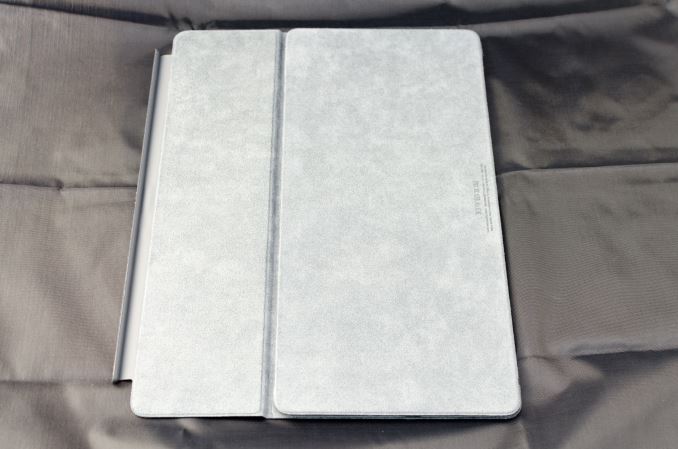
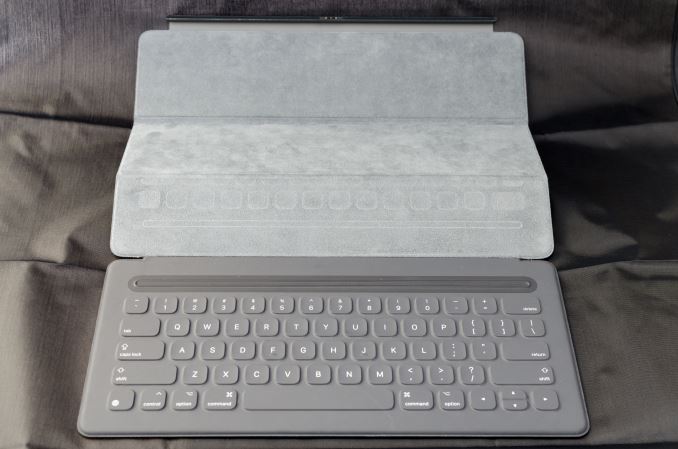
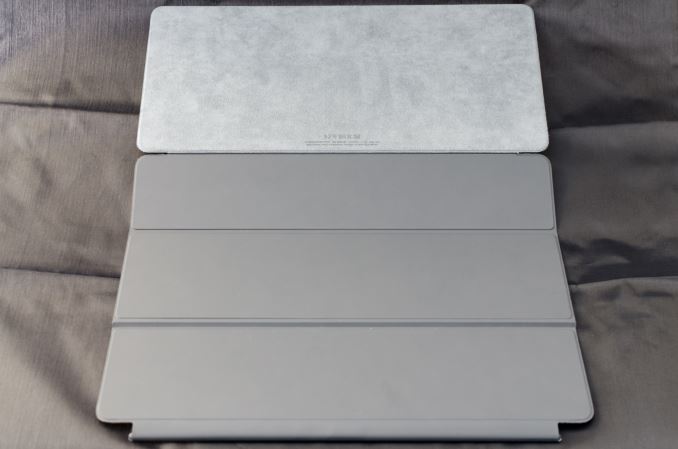
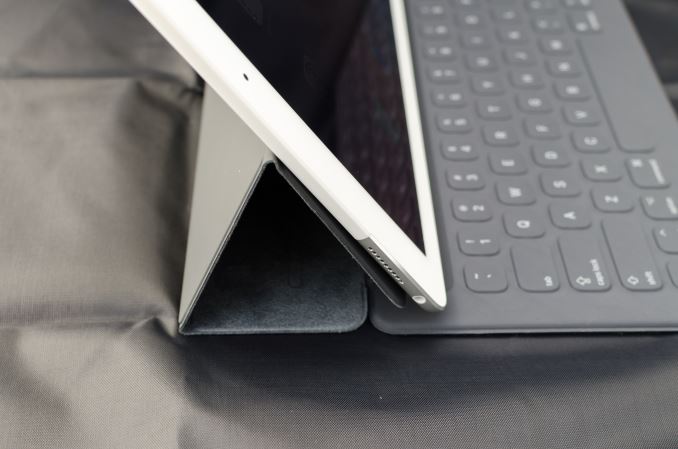
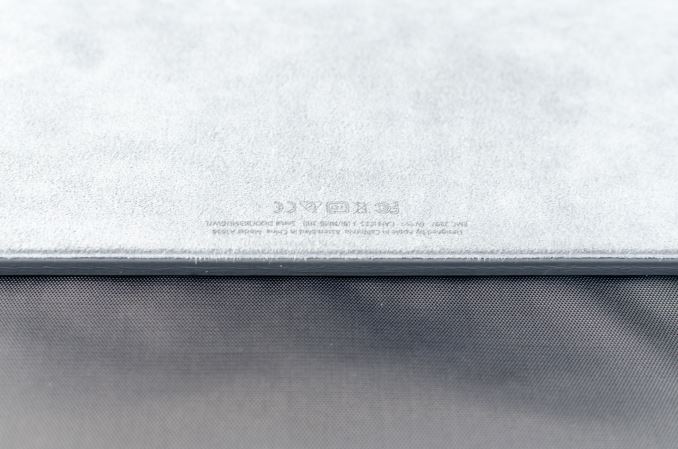








408 Comments
View All Comments
AirunJae - Wednesday, February 10, 2016 - link
Notice he said nothing about the iPad being better than the Surface, just that "...stop being a Fanboy" and "Surface Pro 4 wins" is ironic because you're following you plea for the reviewers (I assume) to stop being fanboys with some fanboyism of your own.MaxIT - Saturday, February 13, 2016 - link
Not running Windows make it better by definition....Delton Esteves - Wednesday, February 17, 2016 - link
Are you out of your mind? Not running full OS makes it worstdarwiniandude - Monday, February 29, 2016 - link
"Full OS"Drivers. Malware. Compatibility issues (install old piece of software, have it break new software). No low latency audio, audio not a priority. Any decent software is designed for mouse and keyboard, not tablet interface. For my purposes Surface is a waste of space. In fact we recently bought used a Surface 2 256GB for $100. Owner thought it was faulty. Wifi didn't work. Touch screen didn't work. Trackpad didn't work. Everything looked fine with the software config except there was malware. Wiped and reset up, works fine. But I can't use it for anything because the software I want to run isn't on Windows. The tablet ecosystem is elsewhere. Windows store is a joke. So it sits gathering dust.
Alecgold - Friday, February 12, 2016 - link
You've written a lot of BS.There is lighting to USB, so what is your point?
Lighting to hdmi adapter is available as well..
Lighting to memory card (with usb-3 speeds) is available
Kickstand is build in in the keyboard or smartcover.
Not everybody needs a pen, so why include it?
I don't need USB, HDMI, SD-cards or kick stands.
So why include it if you don't need it?
Keyboard is expensive indeed, but it's really good...
Who needs backlit, at night you need to sleep
I'm really annoyed by the trackpad on the surface, doesn't work when I want to, does work when I don't want to
Function keys are on the screen if needed or can be swiped up, not as convenient, but I prefer the small depth of the keyboard.
Why would I need to rest my hand? It rests on the table I'm writing on.
Setup was really fast an easy, what is complicated?
The iPad is a tablet so therefore it runs a mobile os, it has great battery life, I can do everything I need to. I just can't OCR PDF's, that is the only thing I still miss.
I'm a professional a consultant, I can do everything I need to, so there it is, it's used by a professional and therefore an iPad Pro. Just as good reasoning as yours, I guess.
Is the iPad Pro for anybody? Absolutely not. It's expensive, others need more processing power or bigger/better/more complete software. But if you can get by with it, I t's really a good device and a really good experience!
Delton Esteves - Wednesday, February 17, 2016 - link
Lighting to USB, lighting to hdmi adapter and lighting to memory card will cost you extra.The Kickstand which was built in the keyboard is very difficult to set up and has limited positions.
"Not everybody needs a pen". This is not a reason to charge for extra money.
Despite you do not need usb, hdmi, it does not mean they cannot include it. Because a device is made having in mind the general needs and not a single person needs.
You call yourself a Professional and yet you say "Who needs backlit". It seems like everybody has a definition of a Pro device this days.
So you always write on a table?
Writting and tapping on the screen is tiresome, function keys make you more productive.
Constructor - Saturday, February 20, 2016 - link
It is an illusion to believe that "included" items were in any way "free". In fact, for most people they would only pay more for stuff that they'd never use.On the bottom line everybody would have to pay more and there would be more electronic waste. Only the few people who actually used those add-ons might(!) get away slightly cheaper. That's it.
Delton Esteves - Tuesday, February 23, 2016 - link
But at least, they are not charging extra. If you consider Ipad Pro price you will notice that it is already expensive for what it is and what the majority of its Users will use it for. They are charging a lot for zero extra functionality.Constructor - Tuesday, February 23, 2016 - link
I have paid a little more for my iPad Pro than for my iPad 3 four years ago, and the iPad Pro is again a much better tablet than the iPad 3 had been (and it was already a very good one!).And I have paid extra for the Pencil which I actually wanted to use. Other users left the Penicl out and didn't have to pay for it. It's that simple and the way it should be.
So what exactly is the problem supposed to be with me paying for what I want to use, and others not paying for what they don't want to use? That's a really weird mindset from my point of view.
Delton Esteves - Wednesday, March 9, 2016 - link
They should lower Ipad pro price because Apple Pen does not come with it